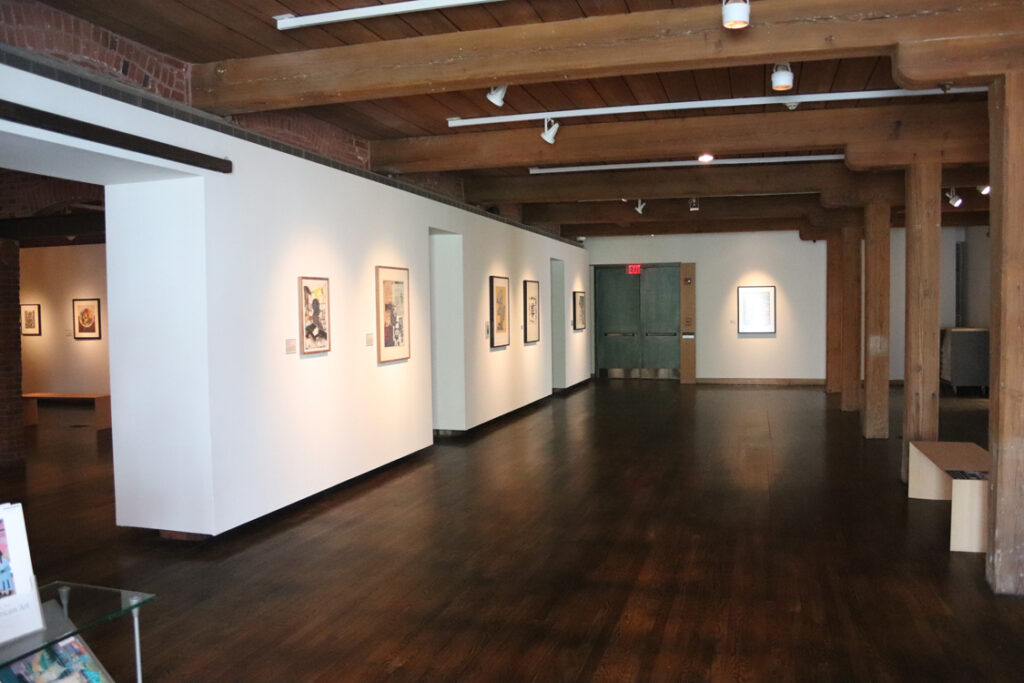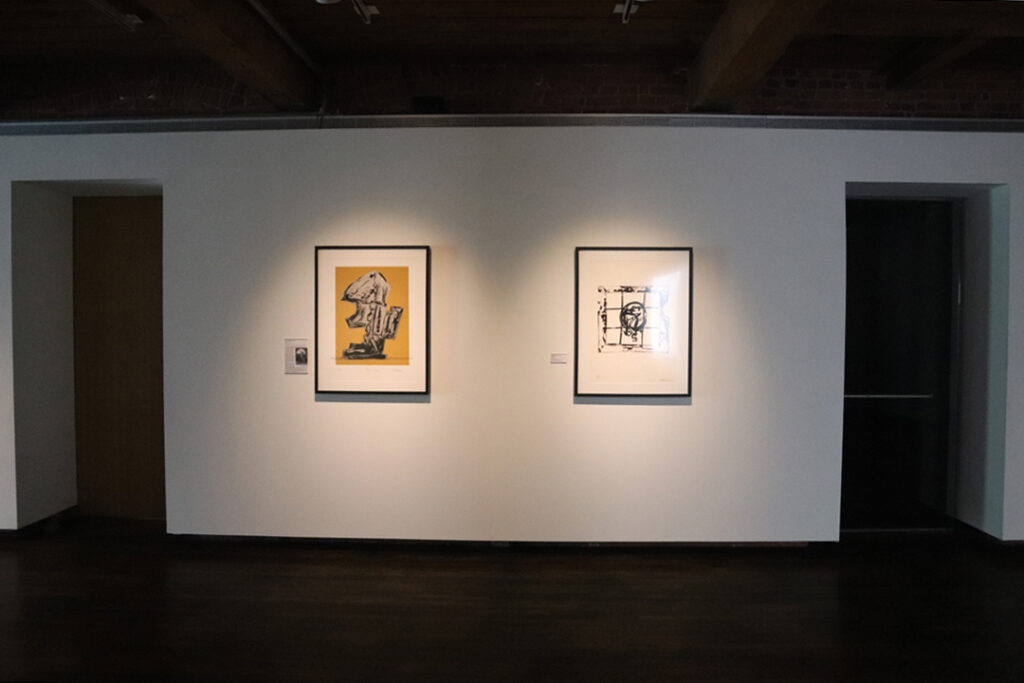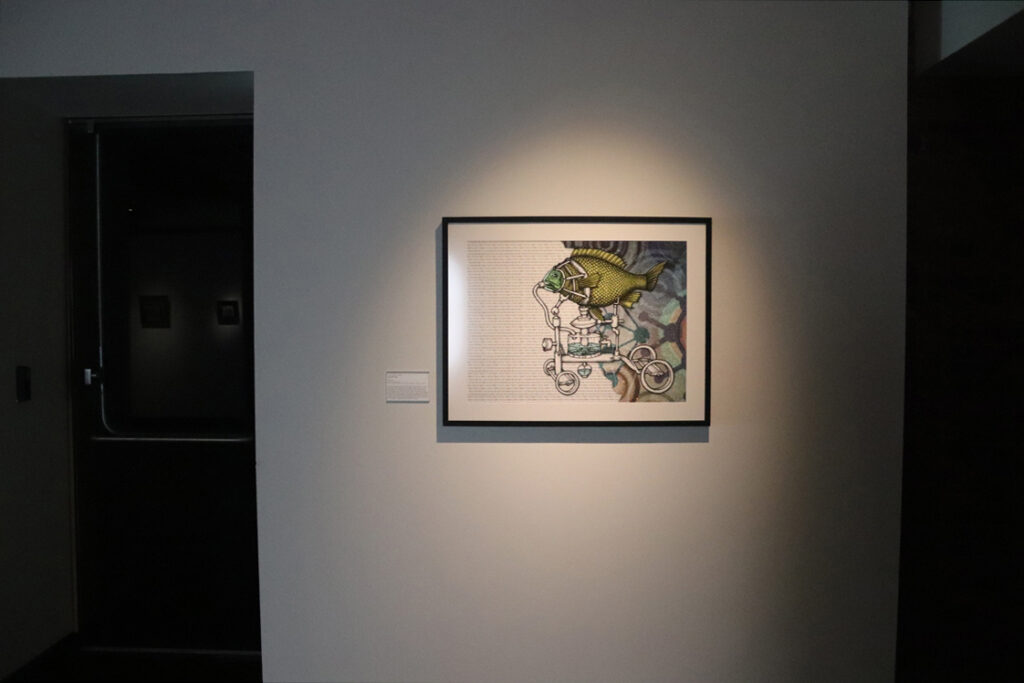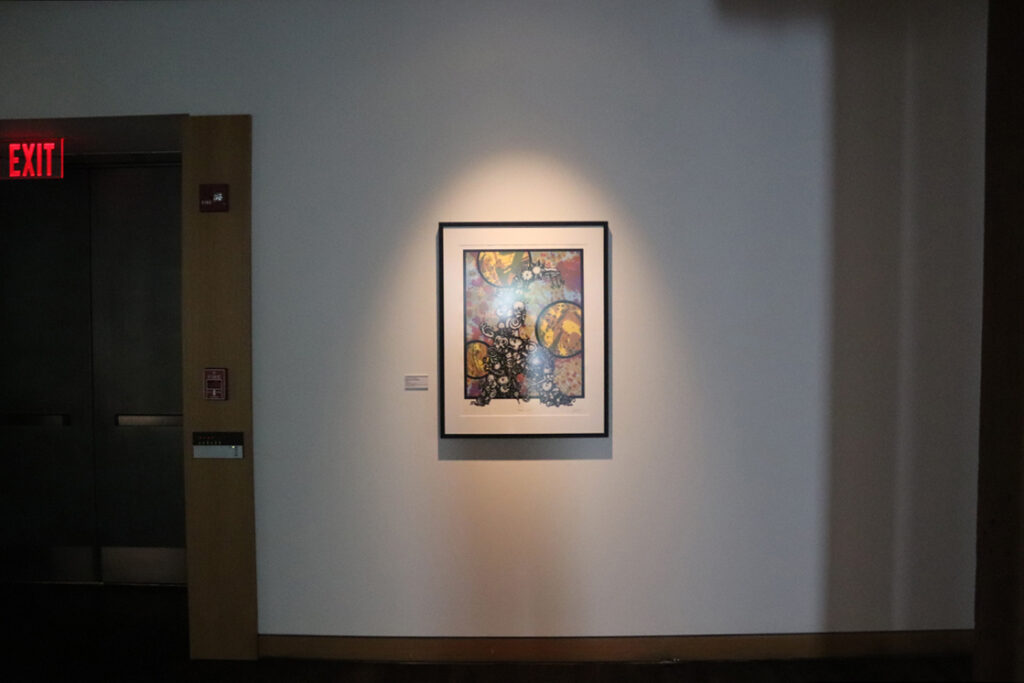
Problem Solving:
Highlights from the Experimental Printmaking Institute
The Experimental Printmaking Institute [EPI] at Lafayette College was established in 1996 as a destination for artists to collaborate with undergraduate students and professional printmakers. Under the leadership of its founding director, Curlee Raven Holton, the EPI has grown into an internationally recognized center for experimental printmaking. In 2016, Holton made a gift of over fifty EPI prints to the Museums Collections, part of University of Delaware Library, Museums and Press. His gift showcases the creative depth and innovation of the students, visiting artists and master printers who have shared studio space at the EPI over the years and calls attention to the significant contributions of African-American artists in the twentieth and twenty-first centuries.
In the spring of 2018, selections from the EPI gift went on view as part of Problem Solving: Highlights from the Experimental Printmaking Institute. The title of this exhibition came from Holton’s reflection on the history of the EPI in a 2014 interview, “Experimentation in the printmaking studio has a lot to do with problem solving.”[1] Holton’s gift to the University of Delaware celebrates two decades of creativity on the part of artists working outside of preconceived notions about their own art making. By exhibiting their prints alongside other works from the Museums’ collection, the problem solving inherent to artistic experimentation emerged as a primary concern for artists working in a wide variety of print media and techniques.
[1] “Modern Trends in Printmaking: A Conversation between Ricardo Viera and Curlee Raven Holton, 2014” in Curlee Raven Holton et al. eds., You Can Fly and Making Prints Too: The Experimental Printmaking Institute 1996-2016 (Easton, PA: Lafayette College, 2016), 12-13.

1.
Curlee Raven Holton (b. 1951)
Searching for my Memory
2016
Serigraph and lithograph
Museums Collections, Gift of Experimental Printmaking Institute, Lafayette College
In addition to his work as an educator and as the founding director of the EPI, Curlee Raven Holton is an accomplished painter and printmaker. His work often alludes to nostalgia and remembrance, as in Searching for My Memory, where the silhouette of a man’s head is filled with spiraling text – “remember, remember, remember.” The print is related to a painting Holton made the same year, Searching for Memory (Timmy), and epitomizes his method of working and reworking themes across diverse media.
2.
Curlee Raven Holton (b. 1951)
Legacy
2007
Mixed media serigraph
Museums Collections, Gift of artist in honor of grandson, Ché Alexander Holton
Legacy honors David Kearney McDonogh, who became the first African-American student to graduate from Lafayette College in 1844. Born into slavery in 1819, McDonogh was sent by his Louisiana owner to be educated at Lafayette with the expectation that he would sail with other newly freed slaves to Liberia as part of a repatriation movement that began in the eighteenth century. In the print, McDonough’s life and legacy are framed within the broader history of the United States with collaged excerpts from the Voting Rights Act of 1965 and an early version of the Bill of Rights.

3.
Melvin Edwards (b. 1937)
Transcendence
2005
Serigraph
Museums Collections, Gift of Experimental Printmaking Institute, Lafayette College
4.
Melvin Edwards (b. 1937)
Untitled
2005
Serigraph
Museums Collections, Gift of Experimental Printmaking Institute, Lafayette College
Melvin Edwards’ serigraph Transcendence was made during his tenure as artist-in-residence at the EPI in 2004 and 2005. The print is a two-dimensional translation of Edwards’ monumental public sculpture by the same name, now installed outside of Skillman Library on the campus of Lafayette College. The abstract sculpture is a tribute to David Kearney McDonogh, the Lafayette graduate whose life is honored by Curlee Raven Holton’s print, Legacy, on view in this gallery. The title, Transcendence, refers to the transcendent life of McDonogh, whose education led him from enslavement to a career as a physician in New York City.
Edwards studied printmaking at the University of Southern California in the late 1950s before becoming a sculptor. His return to printmaking began with visits to Robert Blackburn’s Printmaking Workshop in the East Village in New York City and continued with his collaborative work at the EPI. His sculptures and prints are linked through subject and form, as in Untitled and Transcendence, and through material, as Edwards often uses components of his sculptures as mark-making instruments in his two-dimensional work.


5.
Jase Clark (b. 1982)
Unstill Life
2016
Serigraph
Museums Collections, Gift of Experimental Printmaking Institute, Lafayette College
6.
Jase Clark (b. 1982)
Perpetual Existence
2007
Serigraph
Museums Collections, Gift of Experimental Printmaking Institute, Lafayette College
Jase Clark joined the EPI in 2004, where he has worked as a master printer for nearly a decade. He has collaborated with many of the artists featured in this exhibition, including David Clyde Driskell, Faith Ringgold, and Willie Cole. Clark is also a successful artist and printmaker in his own right. The two prints on view in this exhibition represent the next generation of innovative printmaking at the EPI. Through his careful choice and layering of materials and techniques, Clark’s Unstill Life responds to the imagery of our natural world and to “the interior landscape of the mind,” as he puts it.

